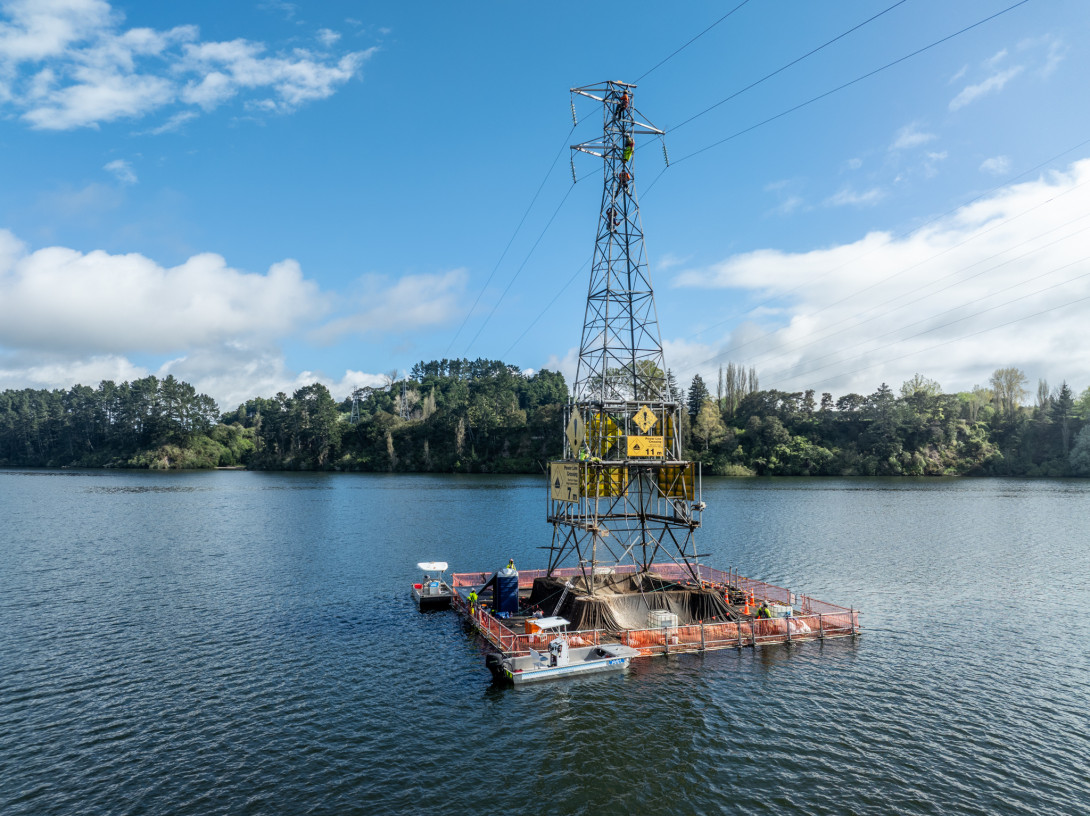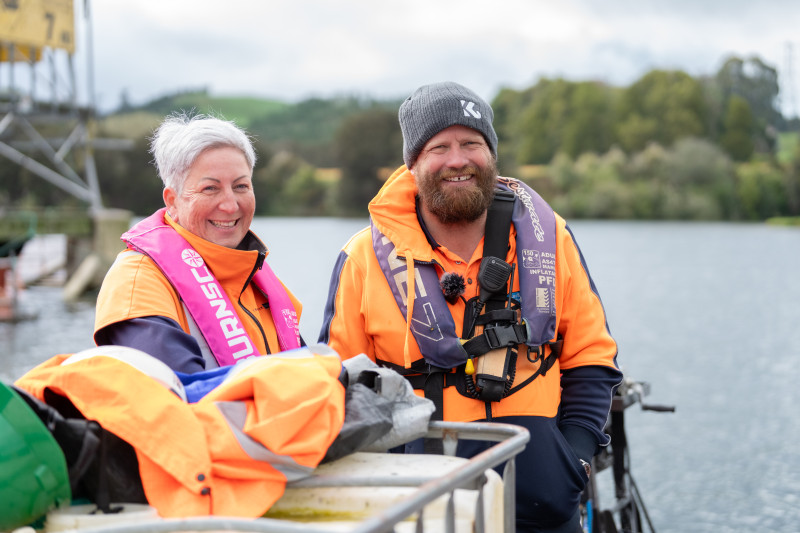13 Oct 2025

Ongoing maintenance of four Transpower electricity transmission towers in the middle of Lake Karāpiro is not just good for the reliability of electricity supply in the Waikato – it is also benefitting the watersports community in Cambridge and surrounding areas.
The national electricity grid owner has turned to local race-infrastructure provider Karāpiro Rowing Inc (KRI) to provide equipment and expertise to help its service provider SRG Global access its transmission towers and safely undertake the water blasting and painting work essential for maintaining them.
KRI Facilities Manager Dennis Howard said the two-month job involved his team setting up pontoons around each of the towers, providing multiple boats to transport equipment and maintenance crews to site each day, and providing boat skipper training so the crew could manage its own transport. Without KRI’s involvement, Transpower would have needed to transport a large barge down from Auckland.
“We usually use these pontoons on race days, but they also make a perfect platform for Transpower's service provider crews to safely work on the transmission structures,” he said.
“Using the pontoons is much cheaper and more convenient than bringing in a barge, and we can invest the money we earn straight back into plant and infrastructure we use on the lake.
“We’re doing this at a time of year where there are no major regattas, so it’s a great arrangement for all concerned.”
KRI is a not-for-profit incorporated society that has organised events for Rowing, Waka Ama, Canoe Racing, Dragon Boating and others on Lake Karāpiro for more than 30 years. Mr Howard and his wife Carol are the only full-time employees and rely on some casual staff as well as their amazing group of volunteers to help run the facility.
Transpower Project Manager Tracey Sherman said Transpower has 25,000 transmission towers and 11,000 km of line covering a range of terrain across the length and breadth of New Zealand.
“The four towers in Lake Karāpiro carry electricity transmission lines that connect Waikato electricity users and local generators to the national grid,” she said.
“They are an important part of the grid and require periodic maintenance to ensure we can continue to provide a reliable electricity supply to New Zealanders.”
The work involves removing corrosion from the transmission structures and painting the steel.
Ms Sherman said that gaining access to the towers for the two teams of eight-strong crew from tower painting services provider SRG Global was shaping up to be a real challenge so working with KRI has been the perfect solution.
“A lot of our towers are in hard-to-reach places, so we need to be a bit creative at times to get access to them,” she said.
“This arrangement is working out very well. The pontoons create a solid base for our crew to safely carry out the required maintenance. And we are glad that the money we are investing in ensuring the reliability of our transmission grid is also assisting the local sporting community.”
Lake Karāpiro on the Waikato River was formed in 1947 by the damming of the Waikato River to store water for the 96-megawatt Karapiro power station.
It is the home to Waka Ama, dragon boating and canoe racing national championships every year. It is also one of two premier rowing venues in New Zealand and is the base for the country's high-performance rowing programme.
Since the 1980s, it has alternated with the South Island's Lake Ruataniwha to host the New Zealand national rowing championships and the Maadi Regatta, New Zealand’s secondary school rowing championships.
It also hosted the World Rowing Championships in 1978 and 2010 and the rowing races for the 1950 British Empire Games. When an International Rowing Federation inspection panel visited in March 2006 to scope the lake’s suitability for the 2010 World Rowing Championships, it said that it was one of the fairest courses in the world one of the most picturesque.
For more information or high res images, contact Nathan Green on 027 387 5256 or [email protected]
